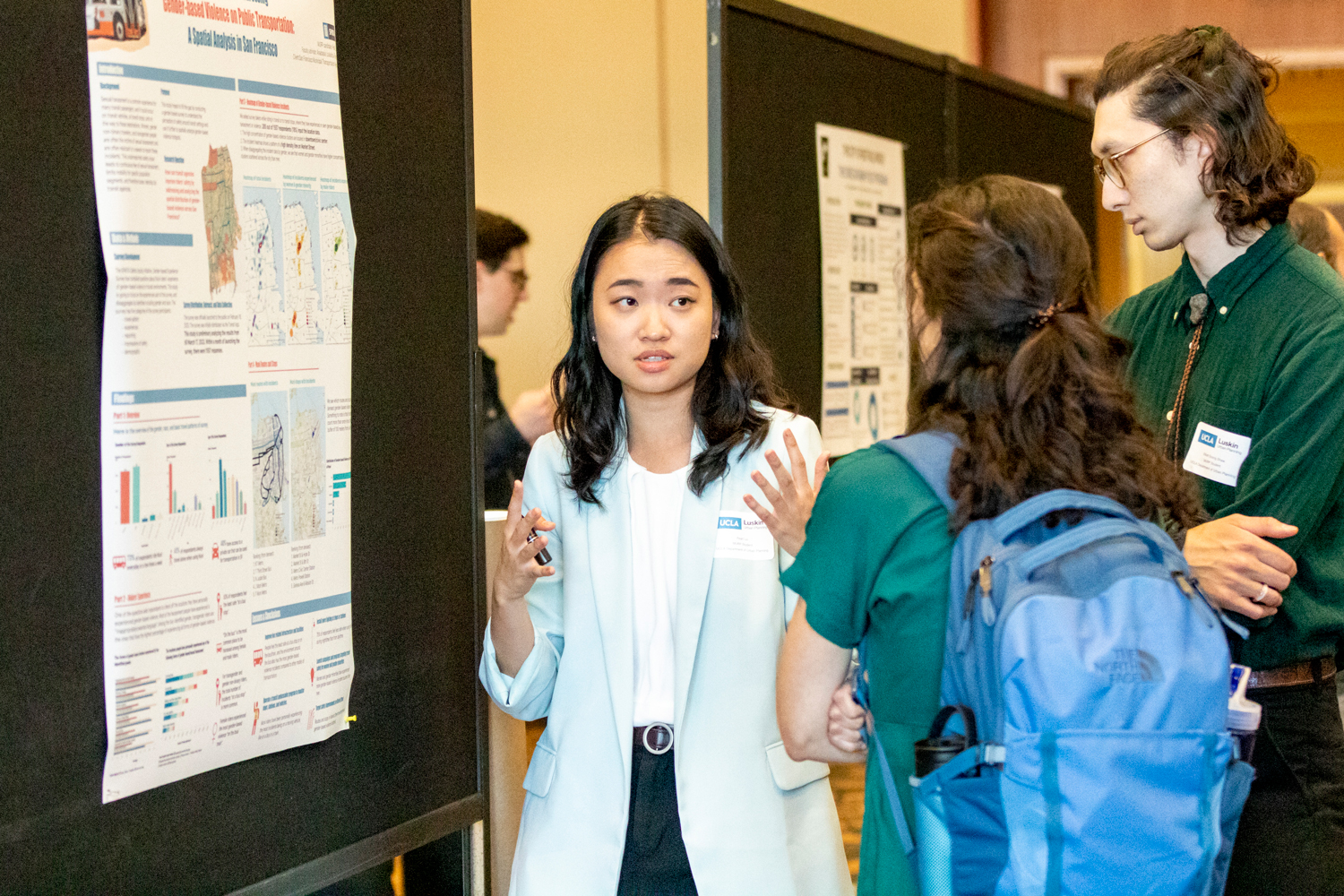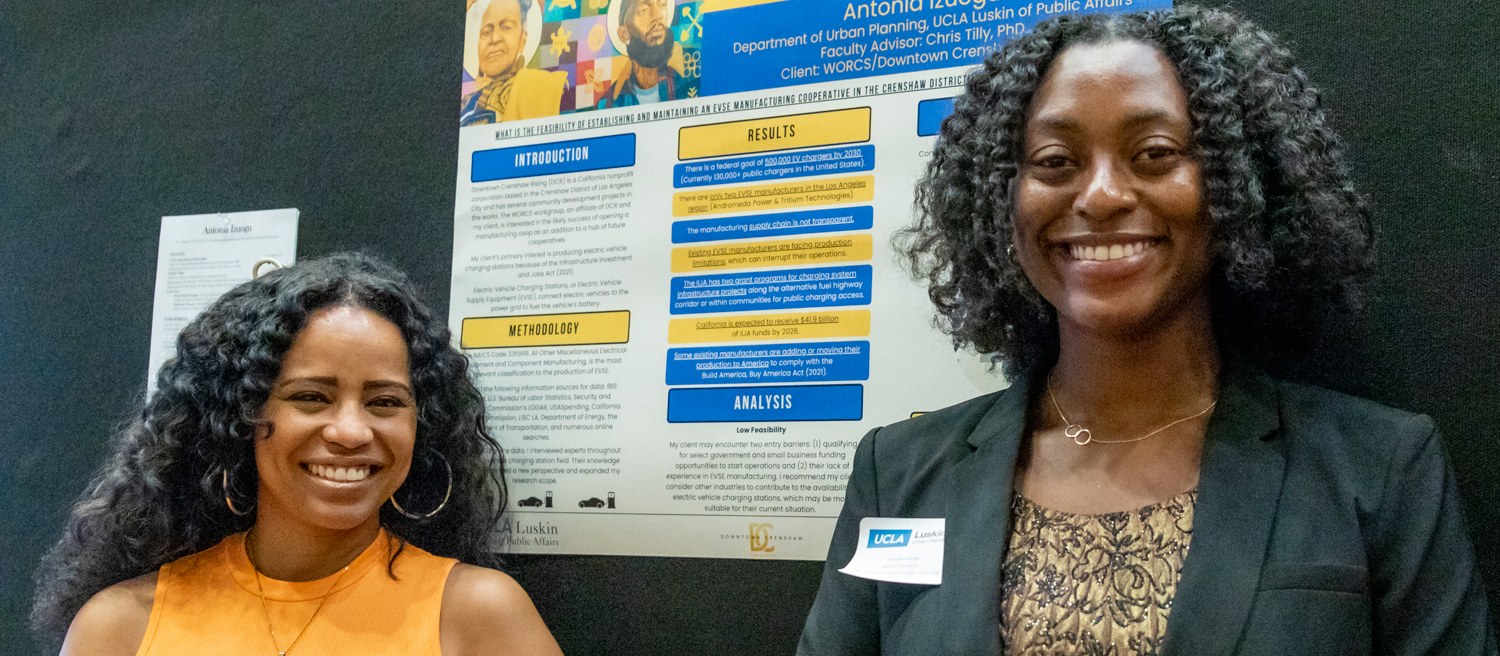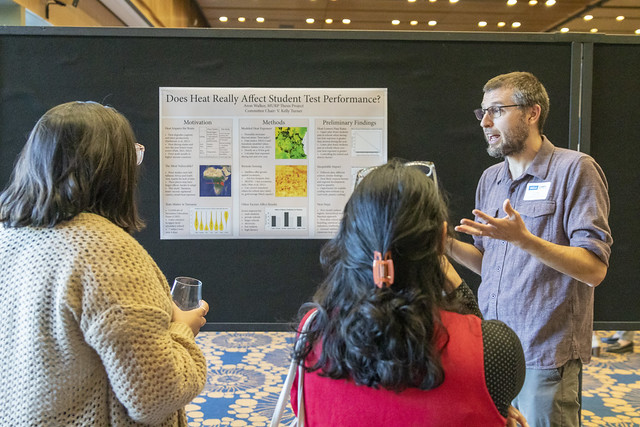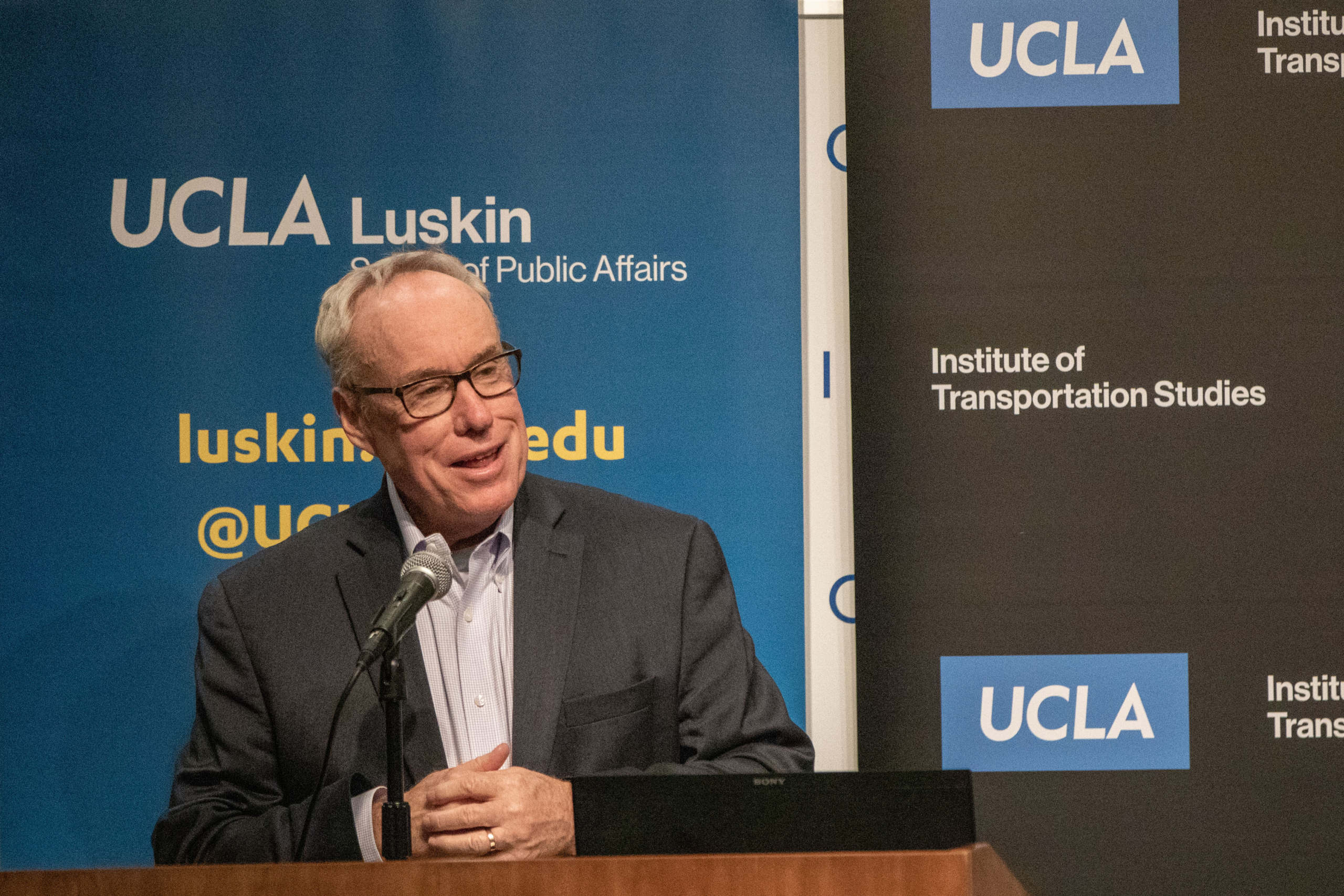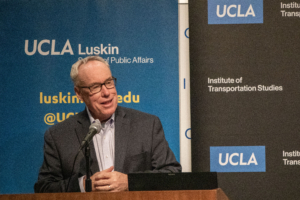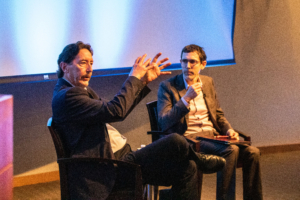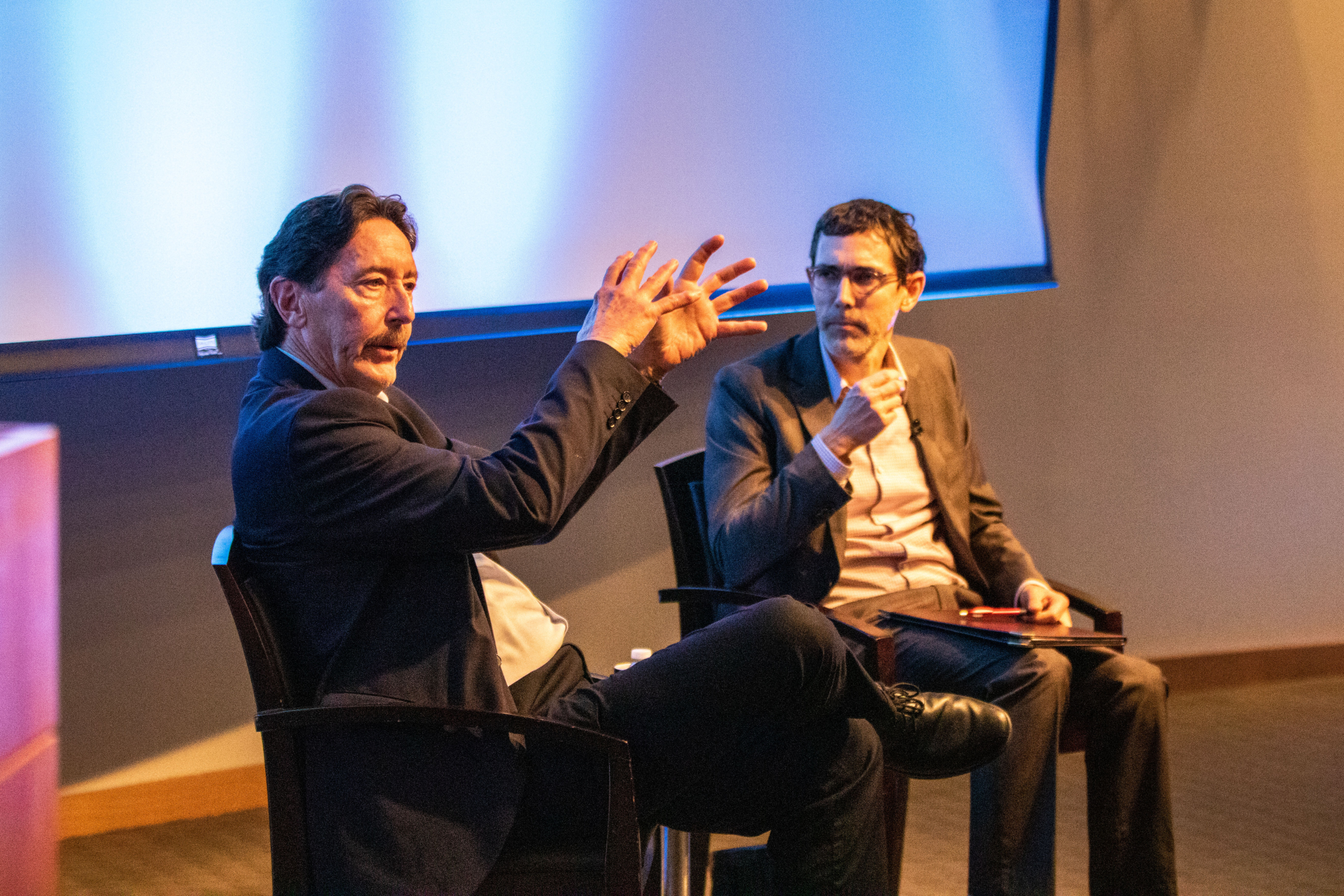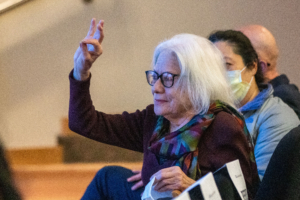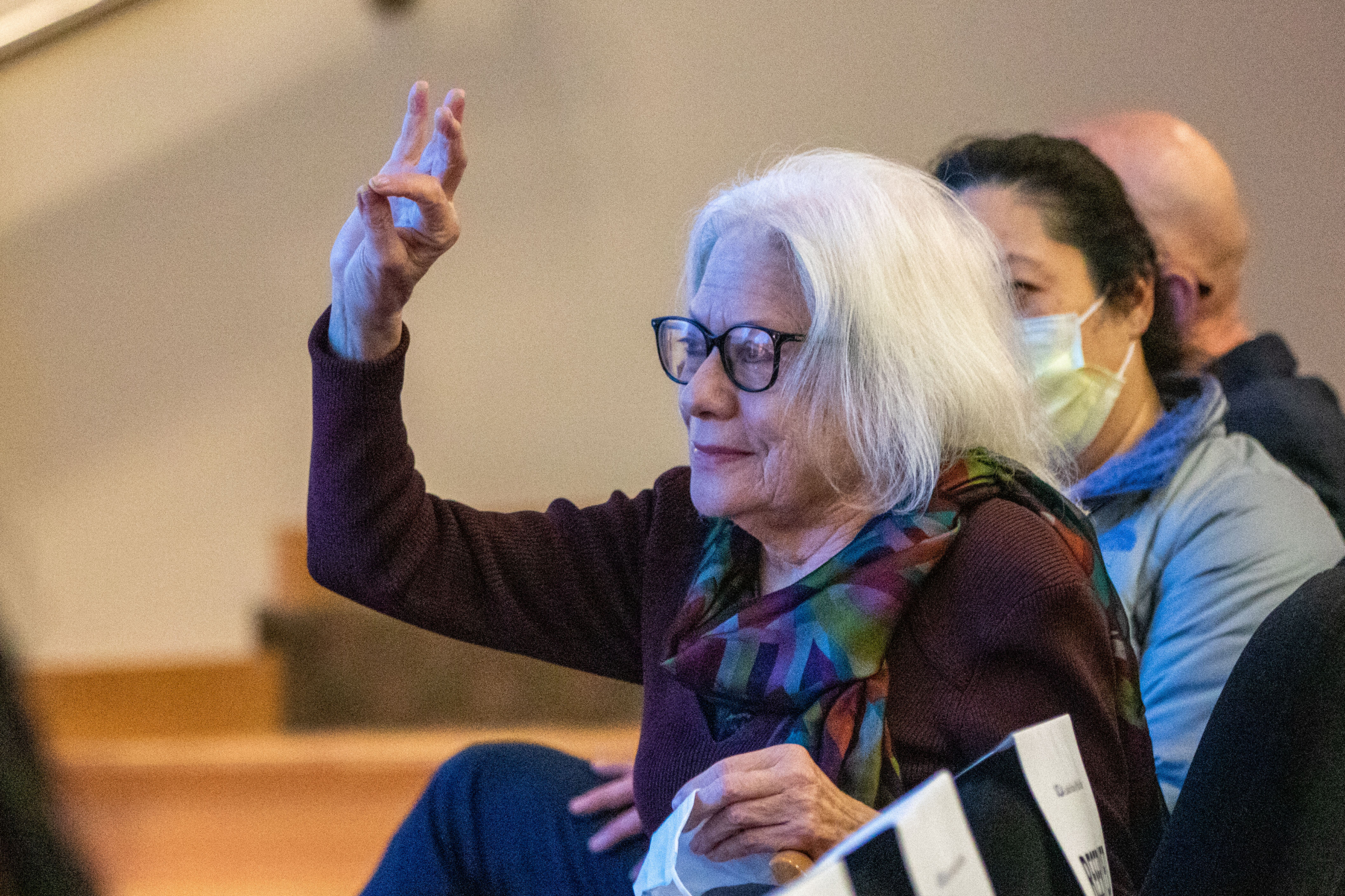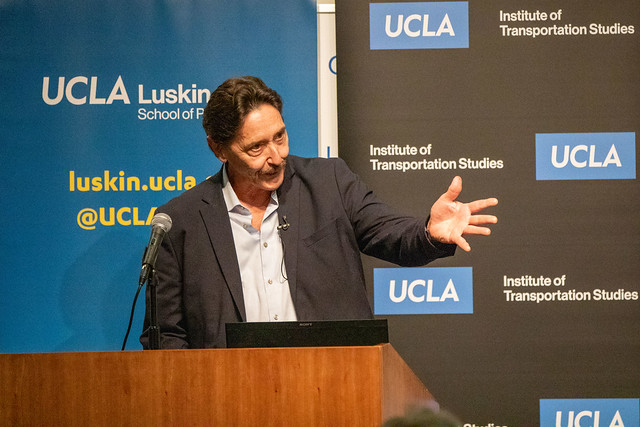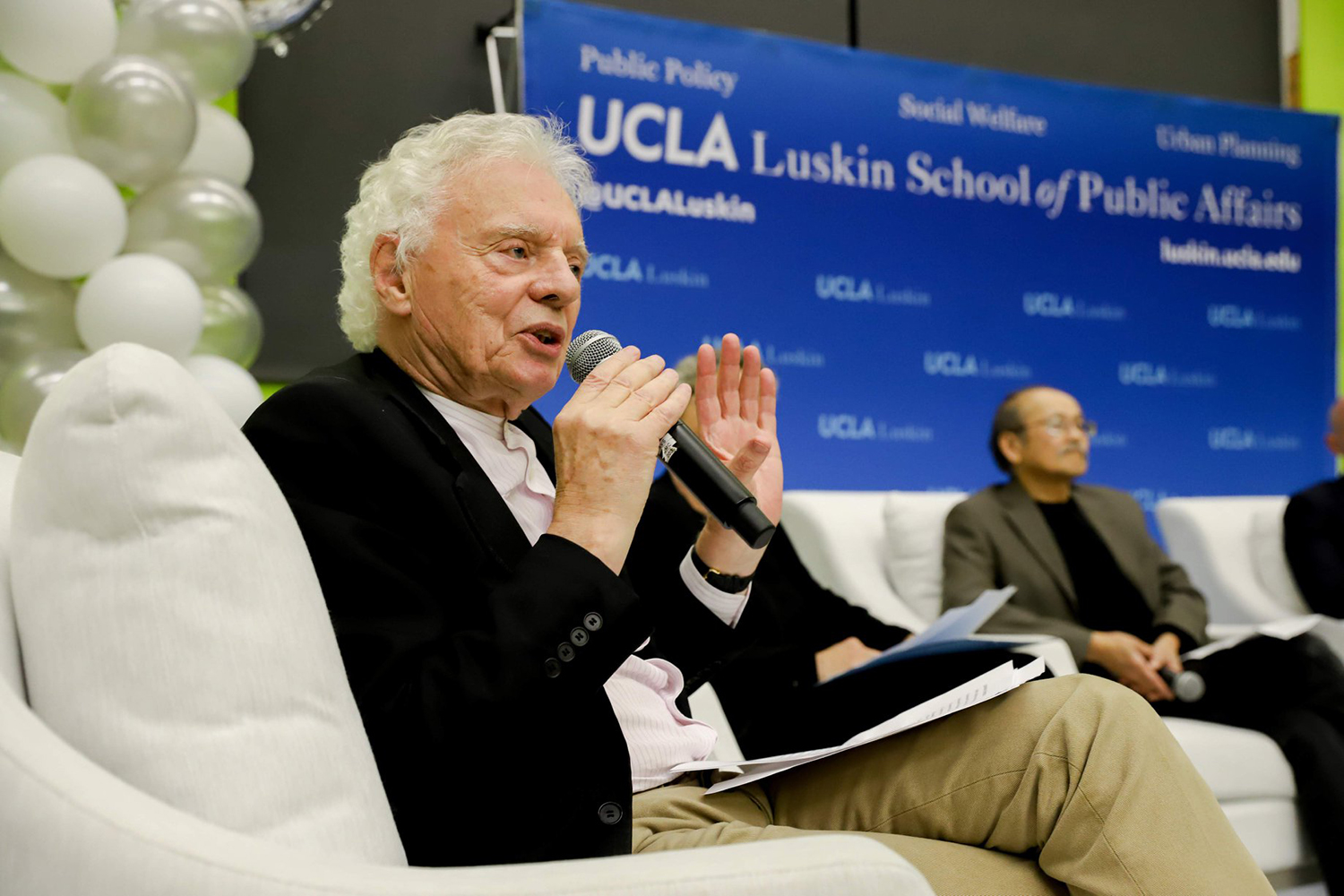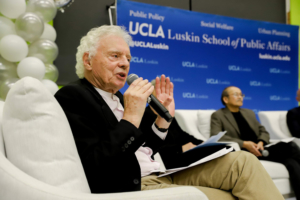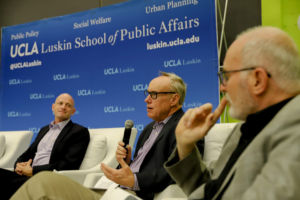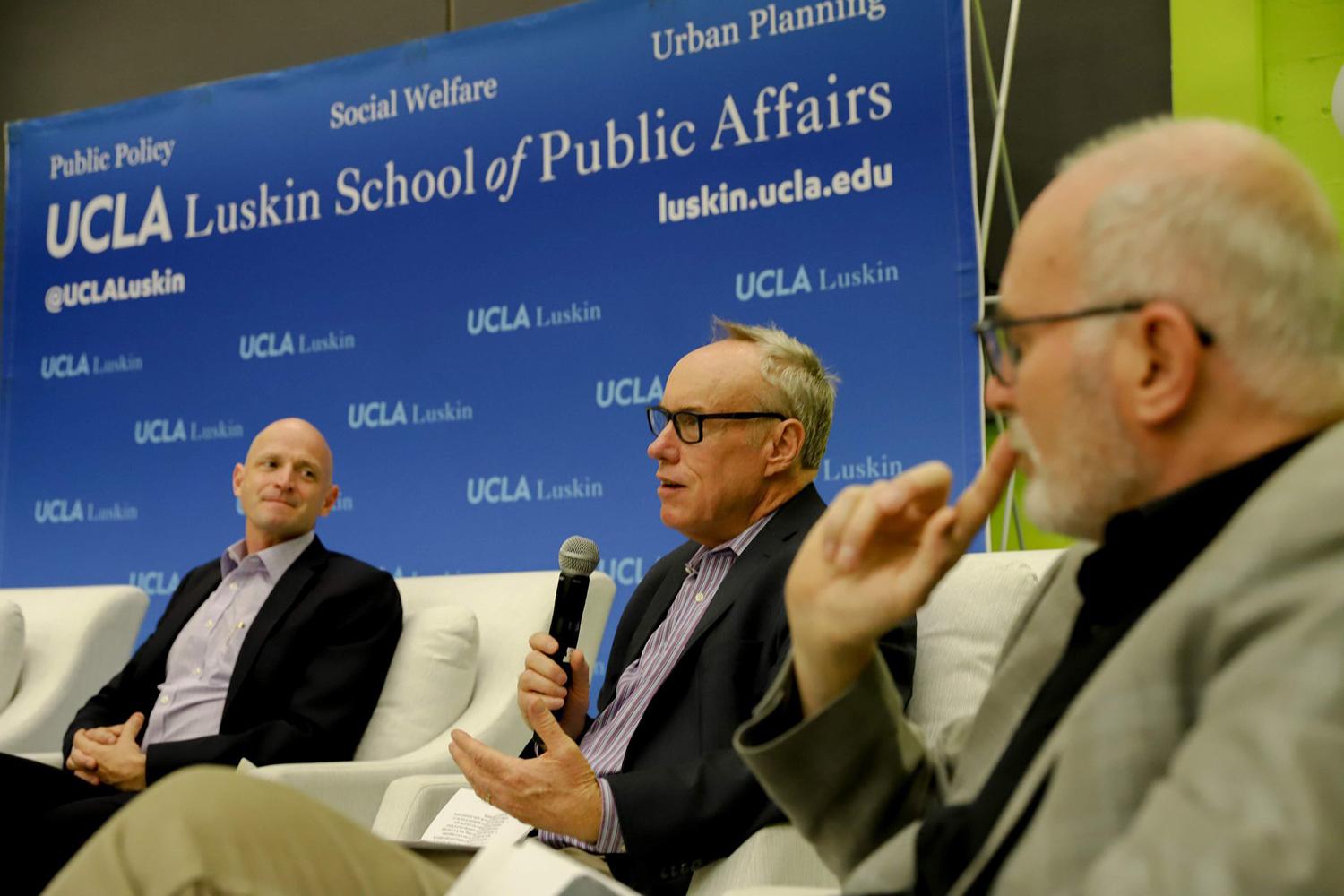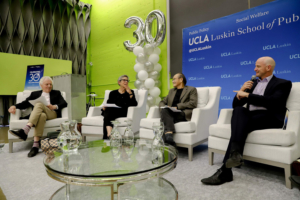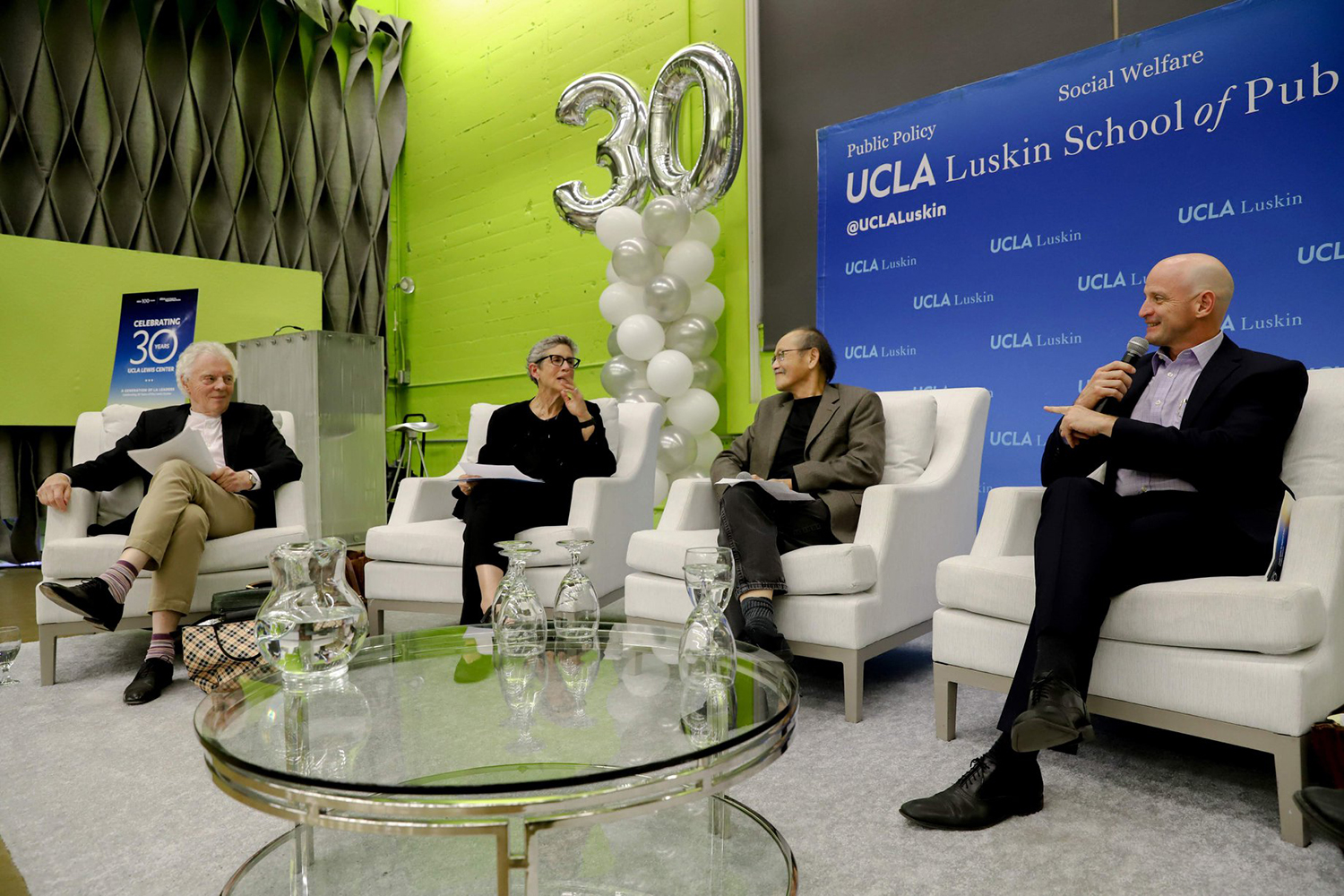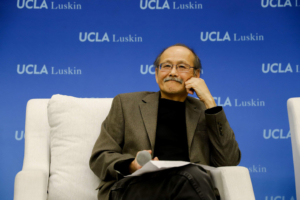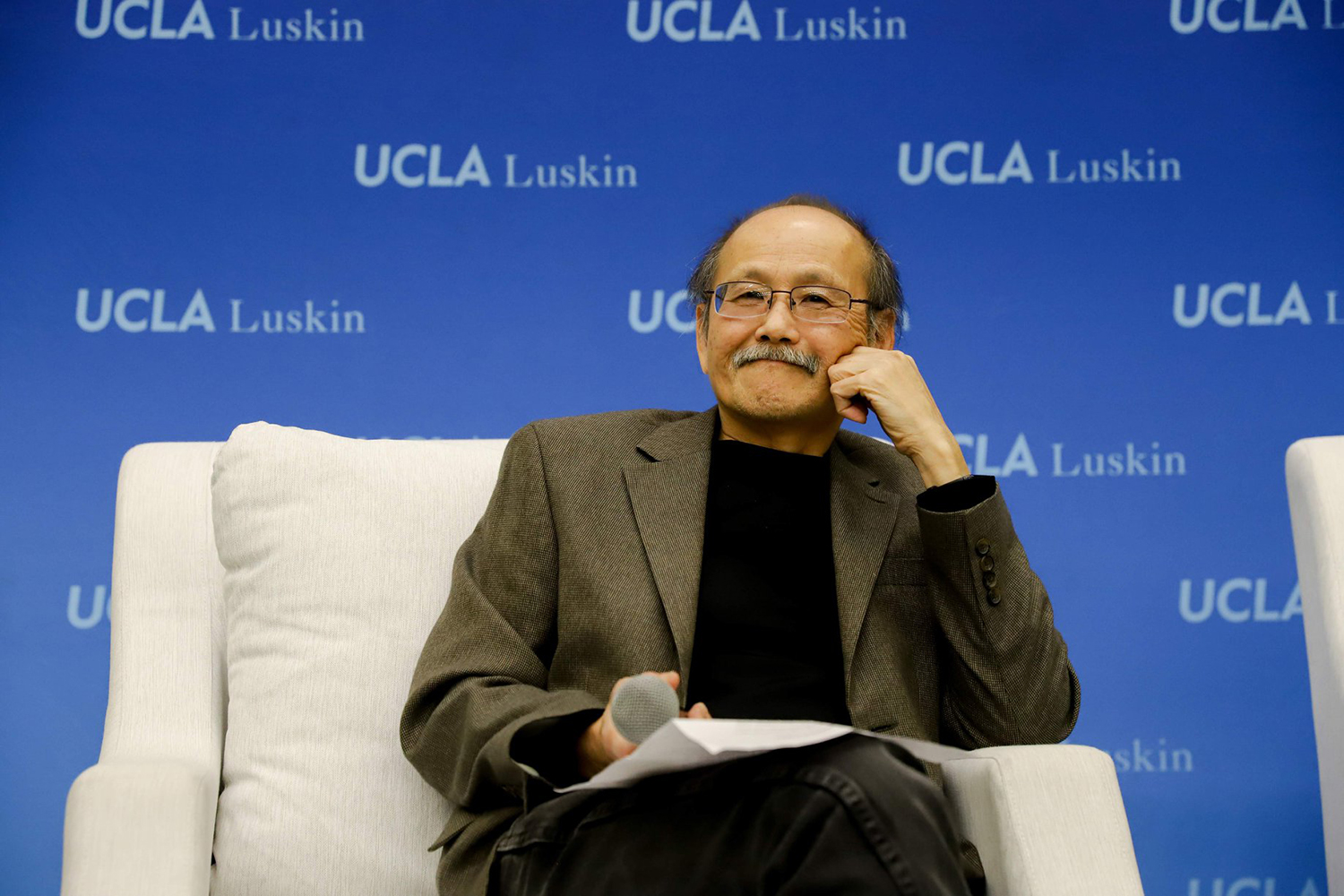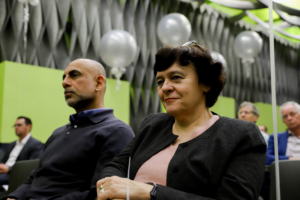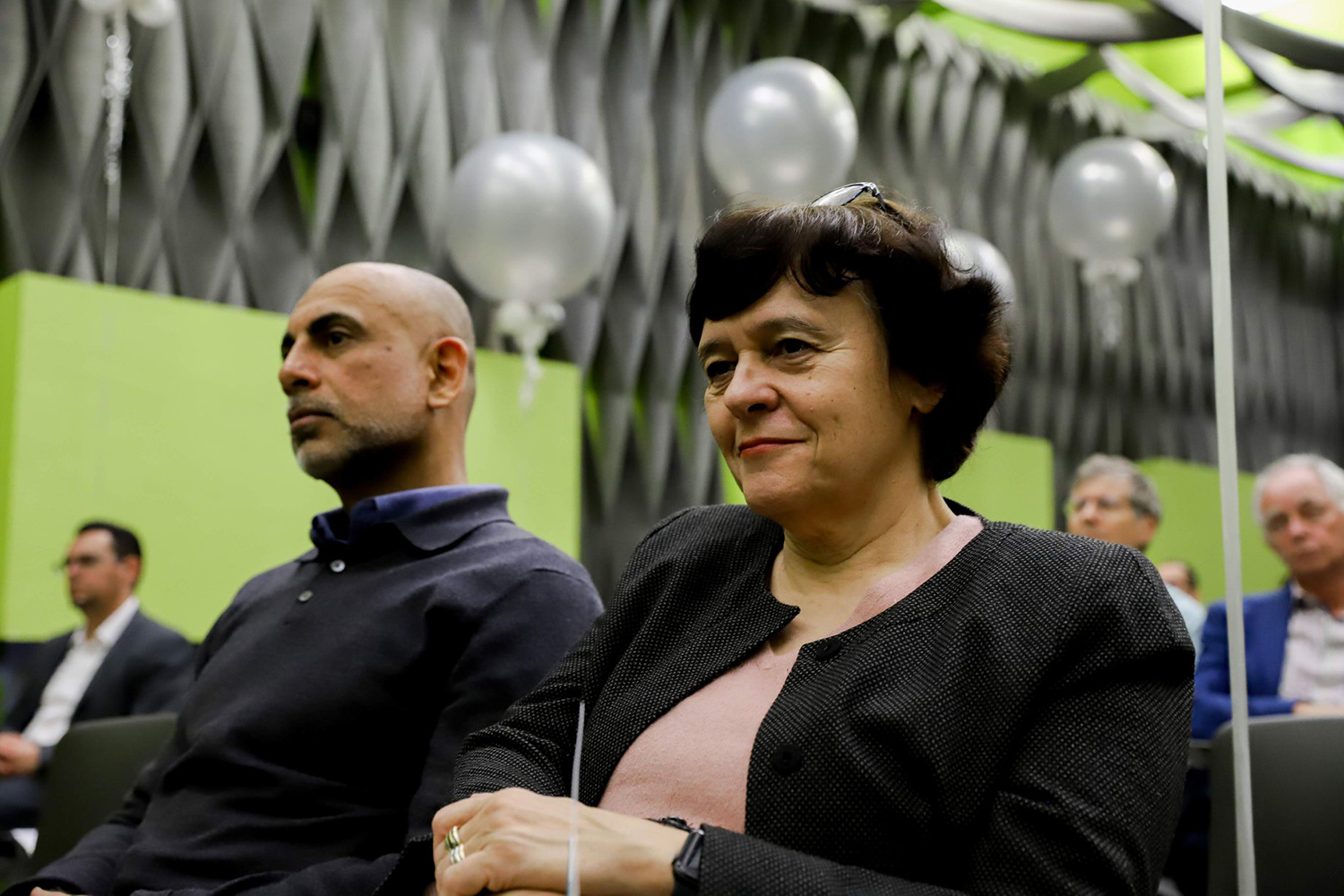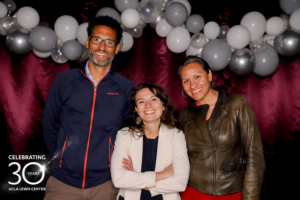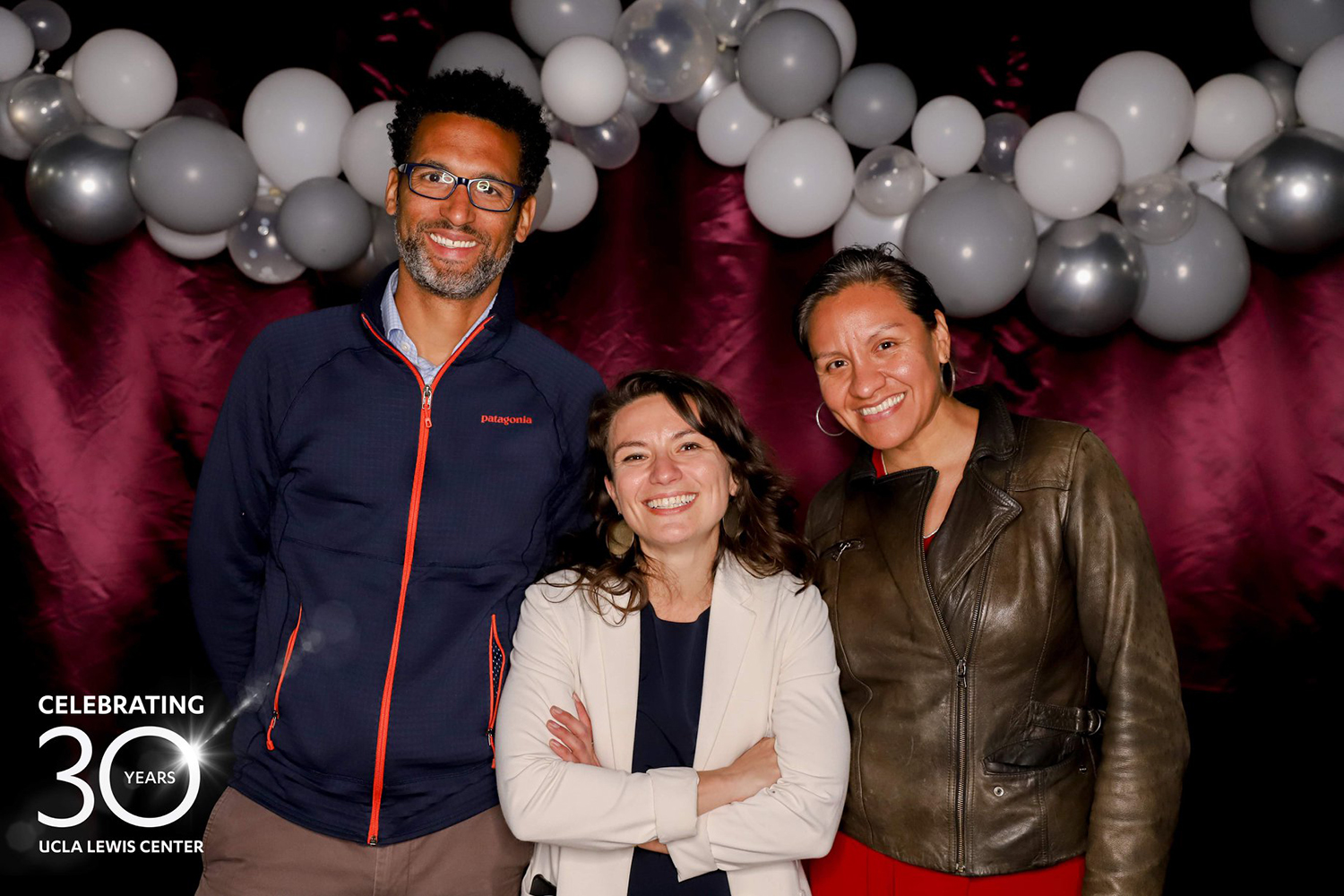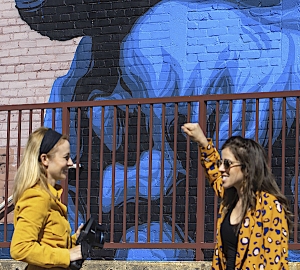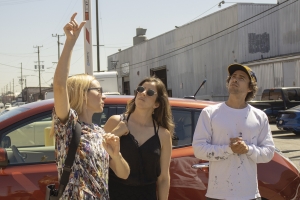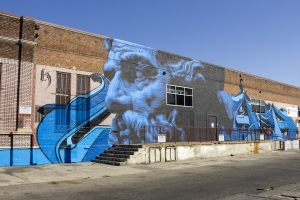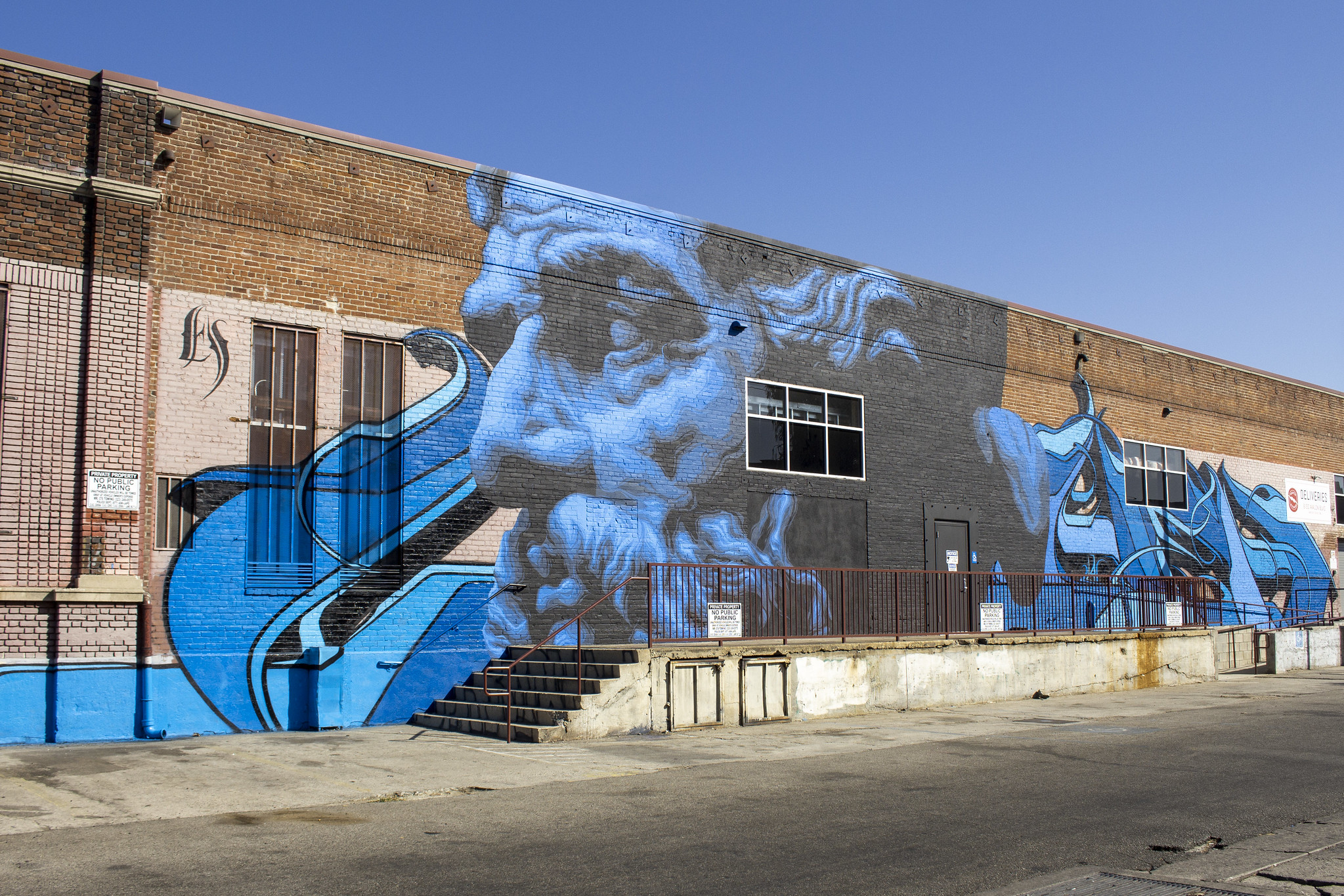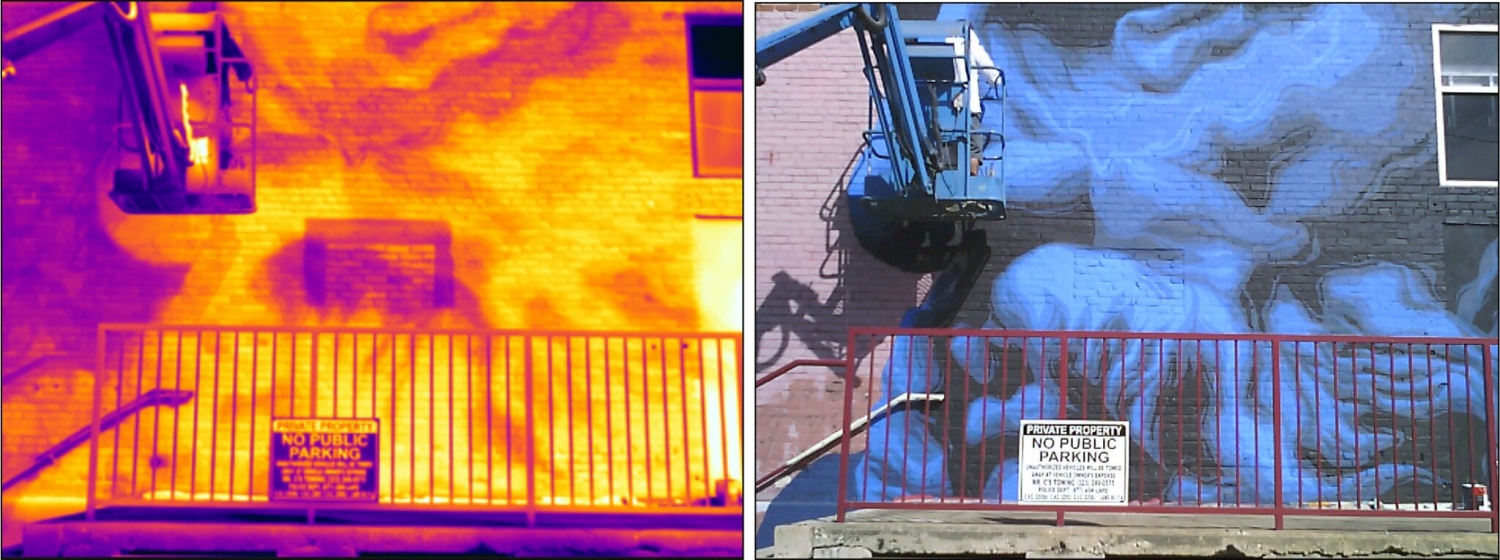A View from the Top UCLA Luskin students get a look at policymaking, public service work and life in Los Angeles city government
by Stan Paul
The view from the top of the iconic Art Deco-style tower of Los Angeles City Hall provides a unique, 360-degree prospective of the sprawling Southern California city — vast, complex and in constant motion.
On April 11, a contingent of UCLA Luskin School of Public Affairs graduate students gathered inside the tower’s 27th floor to gain perspectives from top city and county leaders, including UCLA and UCLA Luskin alumni, about their work with city government and their insights on important and pressing daily issues that drive the bustling city below.
The 19th annual Luskin Day at Los Angeles City Hall was held in partnership with UCLA Government and Community Relations and the Office of City Councilwoman Katy Yaroslavsky. Students from UCLA Luskin’s three graduate programs, Public Policy, Social Welfare, and Urban and Regional Planning, engaged in conversation with the group of experienced leaders and high-level city officials and experts in various fields on topics including housing, homelessness, sustainability and transportation.
“I hope today gives you an honest look at the complexity of city government, and I hope you walk away with the understanding of the deep sense of the purpose of mission driven work that we do here in L.A. and especially in this time of difficulty,” said guest panelist Kristin Torres Pawling, a 2009 UCLA and 2012 UCLA Luskin urban planning alumna.
“I also entered the working world in a time of global uncertainty…know that the relationships that you make here today, the relationships that you’ve made with each other, will drive you forward,” she said. “Your ideas and energy, the fresh conversation that you’re bringing to City Hall today, are important to us.”
The day began with formal recognition of the students and the Luskin program during a live city council meeting — a chance to witness local government in action — followed by an opportunity to take what they have learned in the classroom and apply it in the day’s discussion.
Lourdes Castro Ramírez, a 1994 UCLA and 2003 UCLA Luskin urban planning alumna, led the day’s first expert policy panel including Nancy Sutley, Los Angeles Deputy Mayor of Energy and Sustainability; Laura Rubio-Cornejo, general manager of the Los Angeles Department of Transportation and also a 2003 Luskin urban planning alumna; and Zev Yaroslavsky, UCLA alumnus and former longtime member of the Los Angeles County Board of Supervisors and former Los Angeles City Councilmember. Each shared their journey into public service and their various roles and responsibilities.
Castro Ramírez currently serves as president and CEO of the Housing Authority of the City of Los Angeles (HACLA), the second-largest housing authority in the nation which serves more than 200,000 people. The first-generation college graduate said she was encouraged to see students pursuing degrees in public affairs programs as well as careers in the public sector.
“I am deeply grateful to UCLA for investing in me and deeply grateful to UCLA Luskin for giving me the tools necessary to be able to address some of the most complex issues impacting not only our city and the state, but also equip me to serve at the federal level and work on these issues,” said Castro Ramírez, who also has served on UCLA Luskin’s board of advisors.
“Government has the opportunity to be transformational – to improve the quality of life for residents, to be innovative, and also to be nimble all the times,” she said adding, “I think government gets a bad rap – that it’s not creative, that we’re very bureaucratic, that we don’t really care. My experience has been the complete opposite.”
Yaroslavsky said that whether working for the city or county, or a smaller jurisdiction, “Get into to the game…don’t underestimate how your superiors and others will see you for your work product, for your competence, for your vision and for all of the things that make you who you are and part of that is having your Luskin education.”
A lunchtime session with City of Los Angeles personnel experts also provided a deep dive into navigating the city’s application processes and best practices and tips for gaining employment.
UCLA alumna Wendy Greuel, former L.A. city councilmember, and current vice chair of LAHSA Commission and co-chair of the Los Angeles Unified School District Task Force, kept the momentum of the day going.
Greuel, who helped launch the first UCLA Luskin Day at Los Angeles City Hall and who has supported the program since, moderated a panel including 1996 UCLA alumnus Todd Sargent, who leads the global organization development team for Walt Disney Parks, Experiences and Consumer Products and who has served as a Senior Fellow in the UCLA Luskin’s mentorship program. Matt Szabo, Los Angeles city administrative officer, joined Pawling, who also serves as deputy chief of staff for councilwoman Katy Yaroslavsky, and fellow Luskin planning graduate Edgar Reyna MURP ’23, a climate resilience senior analyst for the Los Angeles Mayor’s Office of Energy and Sustainability.
The panelists shared their own experience working in the fast-paced daily life serving the city and its residents, as well as advising them on what work and life are like in city government at the local level to interactions at the state and national levels. Greuel asked what ultimately drew them to working at the local level.
“When I got involved in local work, in city commission work, the impact was so much more real. You could literally see the work you did manifest in the local community,” said Sargent, who previously worked in Capitol Hill where he said things moved at a much slower pace.
Szabo, appointed to his current position in 2023 and who formerly served as deputy chief of staff to former Mayor Eric Garcetti, remarked, “If you’ve been out on the ledge here, if you just look outside, everything that you see that isn’t privately owned is pretty much the responsibility of the city, the streets, the sidewalks, the trees on the sidewalks…it’s all the things you can touch and feel immediately and that for me is more gratifying now.”
A final question for the panel was, “What gives you hope?”
“Hope for me is all of you in this room,” said Greuel.
The day concluded with a round table policy and career session with Los Angeles City Councilwoman Katy Yaroslavsky, a UCLA Law School graduate, who was elected in 2022 to serve the city’s fifth district.
Yaroslavsky talked about managing a public service career, serving her constituents and the city while taking on many new roles since being elected, including chair of the city’s Budget and Finance committee and the task of running the city more efficiently.
“There’s lots of ways to make things better, to make ourselves more efficient, to attract business, to support people who need help to, to work on homelessness and public safety and holistic ways,” she said.
As a member of LA Metro’s Board of Directors, Yaroslavsky said she is excited about projects underway including Metro stations opening across the city’s Westside region, “…the first time since the Red Car in the 1950s and 60s that the Westside will be linked to downtown by mass transit,” she said. For Yaroslavsky, the station openings represent an incredible opportunity for more people to get onto the system who might not know about it and to know what public transit is all about.
Yaroslavsky also dispensed public service career advice to the students including being open to both constructive and unconstructive criticism as part of an important skill set.
“I think it’s hard to do. It’s hard to give constructive feedback. It’s also really hard to take. Both are really important.”
Also difficult is taking risks like changing careers and pursuing public office, she said.
“Once in a while do something that really scares you,” she said recalling daunting decisions as “the best choices I’ve ever made in my career.”
“And, if you give yourself some space and you’re willing to take chances that you are able to take, I think that’s where you grow the most,” Yaroslavsky, concluding with thanking the students for attending the Luskin Day event and taking an interest in — and aspiring to — public service roles.
“It’s really heartening to see so many folks who care and want to be part of the solution, so don’t be strangers.”
To view more photos from this day, please see photo album.
